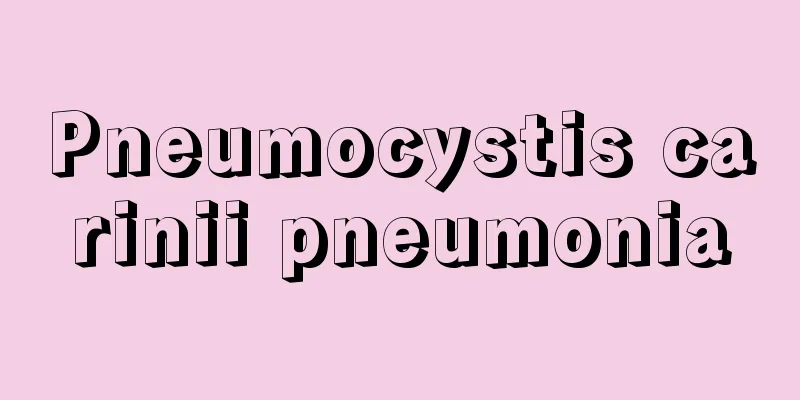Pneumocystis carinii pneumonia

|
The prevalence of Pneumocystis carinii pneumonia is still relatively low, but there is a certain chance of patients developing the disease. This situation is mainly caused by bacterial infection. If it occurs, it will seriously affect the patient's health, and it may even be impossible to cure it. It can only be alleviated through some drugs, so that the patient's quality of life can be relatively improved. Normal respiratory immune defense mechanisms keep the airways below the tracheal carina sterile. Whether pneumonia occurs is determined by two factors: pathogens and host factors. Pneumonia may occur if the number of pathogens is large, the virulence is strong, and/or the host's local respiratory tract and systemic immune defense systems are damaged. Pathogens cause pneumonia through the following routes: 1. Inhalation of air; 2. Hematogenous spread; 3. Spread to nearby sites of infection; 4. Aspiration of bacteria colonizing the upper respiratory tract. Pneumonia may result from aspiration of bacteria from the gastrointestinal tract (gastroesophageal reflux) and from aspiration of environmental pathogens through an artificial airway. After the pathogens reach the lower respiratory tract directly, they multiply and cause congestion and edema of the alveolar capillaries, fibrin exudation and cell infiltration in the alveoli. Except for Staphylococcus aureus, Pseudomonas aeruginosa and Klebsiella pneumoniae, which can cause necrotic lesions in lung tissue and easily form cavities, pneumonia usually leaves no scars after recovery, and the structure and function of the lungs can be restored. Pneumonia can be classified according to anatomy, etiology, or setting. Anatomical classification 1. Lobar (alveolar) pneumonia is mainly caused by Streptococcus pneumoniae. The lesions involve more than one lung segment and are acute inflammation characterized by diffuse fibrin exudation in the alveoli. The lesions begin in local alveoli and quickly spread to the entire lung segment or lobe. 2. Lobular (bronchogenic) pneumonia is a focal acute suppurative inflammation with the pulmonary lobule as the unit. Because the lesions are mostly centered in the bronchioles, it is also called bronchopneumonia. The lesions start in the bronchi and spread to the surrounding alveoli. 3. Interstitial pneumonia is an inflammation mainly affecting the lung interstitium. It mainly invades the bronchial wall and alveolar wall, especially the peribronchial blood vessels, with alveolar wall hyperplasia and interstitial edema. It can be caused by bacteria, mycoplasma, chlamydia, virus or Pneumocystis. Cause classification 1. Bacterial pneumonia such as Streptococcus pneumoniae (i.e. pneumococcus), Staphylococcus aureus, Type alpha hemolytic Streptococcus, Klebsiella pneumoniae, Haemophilus influenzae, Pseudomonas aeruginosa, Escherichia coli, Pseudomonas aeruginosa, etc. 2. Pneumonia caused by atypical pathogens such as Legionella, Mycoplasma and Chlamydia. 3. Viral pneumonia such as coronavirus, adenovirus, influenza virus, cytomegalovirus, herpes simplex virus, etc. 4. Pulmonary fungal diseases such as Candida albicans, Aspergillus, Cryptococcus, Pneumocystis, etc. 5. Pneumonia caused by other pathogens such as Rickettsia, Toxoplasma, parasites (such as Echinocystis, Paragonimus, Schistosoma japonicum), etc. 6. Pneumonia caused by physical and chemical factors, such as radiation pneumonia, chemical pneumonia caused by gastric acid aspiration, drugs, etc. |
<<: How much can be eliminated in 30 days
>>: Is Gardenia Indoor or Outdoor
Recommend
How to extract bone marrow
In daily life, we often see on TV that many leuke...
What are the foods that regulate qi and blood?
When the Qi and blood are weak, it will affect a ...
Introduction to first degree atrioventricular block on electrocardiogram
First-degree atrioventricular block on the electr...
Urgent! ! I have eye pain after radiotherapy and chemotherapy for nasopharyngeal carcinoma. Is it a recurrence? ?
Urgent! ! I have eye pain after radiotherapy and ...
Tips for unclogging a clogged toilet
Toilets are an indispensable appliance in people&...
What is the reason for weight loss due to overeating
People will overeat in their lives. Many people w...
Can taking hormones really help you grow taller?
A child's height is mainly inherited from his...
What should I do if I have an itchy scalp, dandruff, and hair loss?
Now that the weather is getting hotter and hotter...
What is Blue Oxygen Therapy
Blue oxygen therapy is a medical technology that ...
What to do if the swallowing nerve is damaged
Our nerves control the movement of the muscles in...
How long can an elderly person with bladder cancer live
How long can an elderly person live with bladder ...
What's wrong with adenoma
In daily life, adenoma can occur in many parts of...
What is the best way to remove scars
Maybe in normal times, many people will try vario...
What is the solution to motion sickness?
Nowadays, more and more people choose cars as the...
Tongue coating is strawberry-shaped
Problems with the body will be directly reflected...









